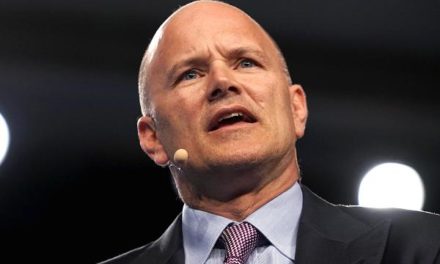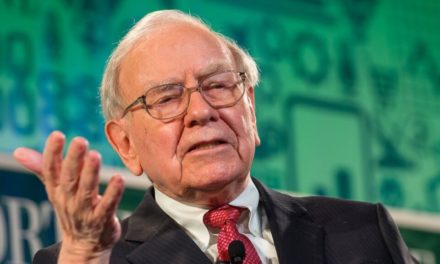Legendary investor Bill Miller (estimated personal net worth $1 billion and a member of the propeller set) has taken to the stage to outline what he believes could trigger a 30% stock market melt-up.
Bill Miller’s 30% stock market melt-up is a contrarian view, bearing in mind that a growing number of investors believe the current bull market is akin to the decadence of the 1920s as portrayed in the Great Gatsby.


Bill Miller believes a 30% stock market melt-up could be triggered
Here’s the common narrative for those of you who haven’t been following it; The view is that central banks aligned with the western monetary system have kept the party roaring for almost a decade due to “emergency monetary policy”, which entailed trillions of dollars of quantitative easing-QE (large-scale asset purchases) and excessive years of ultra-low interest rates.
So “we have a bubble in everything” and a market crash is looming. The bears see this era of low-interest rates and the reverse of QE coming, QE-Exit (the central bank’s balance sheet great unwind) which will ultimately burst the bubble. It is difficult to dismiss this bear view, it has sound logic and it somewhat shatters Bill Miller’s 30% stock market melt-up bullish contrarian view.
So the bears smell honey, they know that the central banks can’t continue with a policy of emergency monetary policy indefinitely without debasing the currency to a critical level which could cause a Weimar style monetary crisis. These investors see the reverse of Bill Miller’s 30% stock market melt-up, in other words, a 30%-50% stock market meltdown, a stock market crash.

“I think we could have the kind of melt-up we had in 2013, where we had the market go up 30 percent”
BILL MILLER
But stock investors know that they are playing a zero-sum game, a battle of views where they are either right, invest accordingly and make money or wrong and finance the winnings of those who get it right. Spectacular wins often go to the contrarian investor who can somehow see what others cannot. Contrarian type of investor bets against the crowd and when they get it right they win big.
So let’s look under the bonnet of billionaire investor Bill Miller’s 30% stock market melt-up view (Bill Miller was also one of the oldest investors to pile into cryptocurrencies before the crypto mania).
The mechanics of Bill Miller’s 30% stock market melt-up is based on the flow or rotation of capital from bonds into equities.
Bill Miller’s bullish stance takes into consideration “Bond King” Bill Gross’s view that it’s the market’s last dance.
“Our entire financed-based system is anchored and captained by banks,” said Bill Gross. “It is based on carrying and the ability to earn it,” he added. When that breaks Bill Gross believes it will be the market’s last dance.
“When credit is priced such that carry can no longer be profitable (or at least grow profits) at an acceptable amount of leverage/risk, then the system will stall or perhaps even tip,” he said.
Bill Gross warns, “We may be approaching such a turning point, so invest more cautiously.”
Yields rise when prices fall – Bill Gross
So how is the bond king playing it?
Gross revealed on Wednesday that his main fund has made a bearish bet on the bond market.
Bill Gross has “gone short” on bonds.
The Janus Henderson manager said the $2.2bn Global Unconstrained Bond Fund has taken a short position on Treasuries, UK gilts, and German Bunds.
Note the inverse relationship between US Treasuries (Notes) price and yields. As investors sell T Notes, their price falls and the corresponding yields rise.
“The rise in yield has been acute, for example, for US Treasuries, with the 10-year yield nearing 2.6 percent on Wednesday from 2.48 percent on Monday. “Yields rise when prices fall” said Bill Gross.
Mr. Gross pointed to a report from Bloomberg that China plans to either slow or halt its purchases of Treasuries.
This comes as no surprise bearing in mind that China these days has got bigger fish to fry. China is building the new Silk Road injunction with an independent monetary system outside the dollar race track. Indeed, this it is a threat to USD hegemony which could also lead to war.
If China, the largest investors in US notes is now selling US paper it is doing so to invest in the new Silk Road and a rival monetary system
But back on the theme, Bill Miller’s 30% stock market melt-up is based on an inverse relationship between capital flows from the Bond to the stock market. In other words, when capital flees stocks it flows into bonds and vice-versa.
So with capital flowing out of US Treasuries and moreover, the bond king shorting bonds this suggest the beginning of a bear market in bonds and a new bull market in stocks.
Bill Miller’s logic is straightforward-the capital has to flow somewhere. If investors are piling out of bonds (to prevent capital depreciation from collapsing bond prices) then investors will rotate into equity.
Really?
There could be a flaw in Bill Miller’s 30% stock market melt-up which is assuming a fully functioning market. The post-2008 Great recession saw the most expansive monetary experiment in the history of finance. Moreover, trillions of dollars of QE broke the mechanics of the market. For almost a decade asset prices continued rising, bonds, stocks, real estate which is evidence of a system flooded with liquidity.
So it also stands to reason that when the great unwind follows and bonds enter a bear market so too will stocks. Think about it. What investor will pile into stocks when stocks are at an already historic price-earning ratio. By every matrix stocks are overvalued.
Moreover, Bill Miller’s 30% stock market melt-up is assuming that investors have no alternatives (TINA). But with the new Silk Road, a rival monetary system and the rise of China there might be already an alternative.
If China, the largest investors in US notes is now selling US paper it is doing so to invest in the new Silk Road and a rival monetary system.
So I am not too sure about Bill Miller’s 30% stock market melt-up. The central banks can create capital but capital is free-flowing, it will flow where gravity takes it. If the new Silk Road has a greater pull because investors see more profits where do you think capital will go?















